In the previous post, I said:
…I’ll accept for the purposes of this discussion that no camera manufacturer uses pixel shift on cameras that have AA filters. I don’t know that that’s true, but I can’t think of any counterexamples.
Erik Kaffehr found a counterexample, the Nikon Zf. In the spirit of scientific reproducibility, I performed my own analysis on the DPR Studio Scene image for the Zf. This is not a complete reproduction, since I used the same capture as Erik, but it’s the best I can do without buying or renting a Zf. I used the raw file.
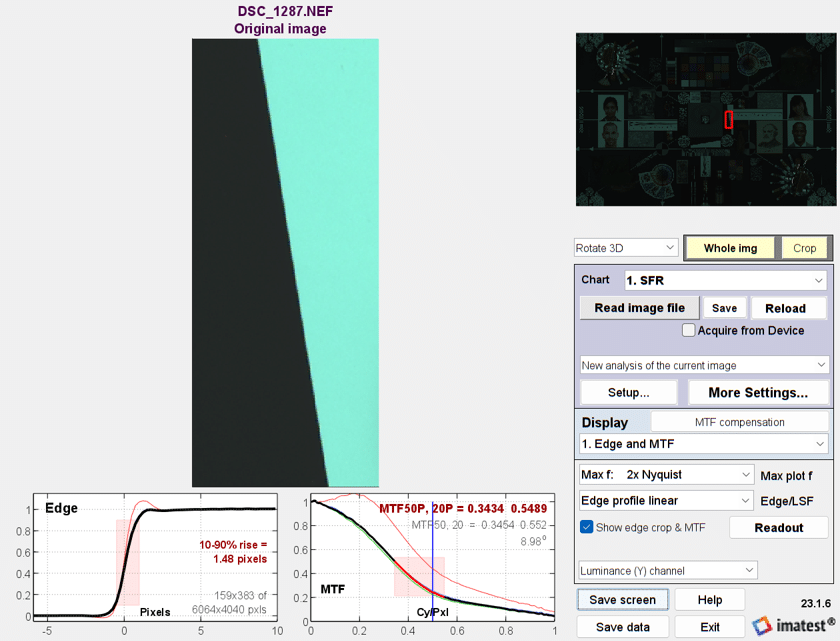
The vertical edge has no AA filtration.
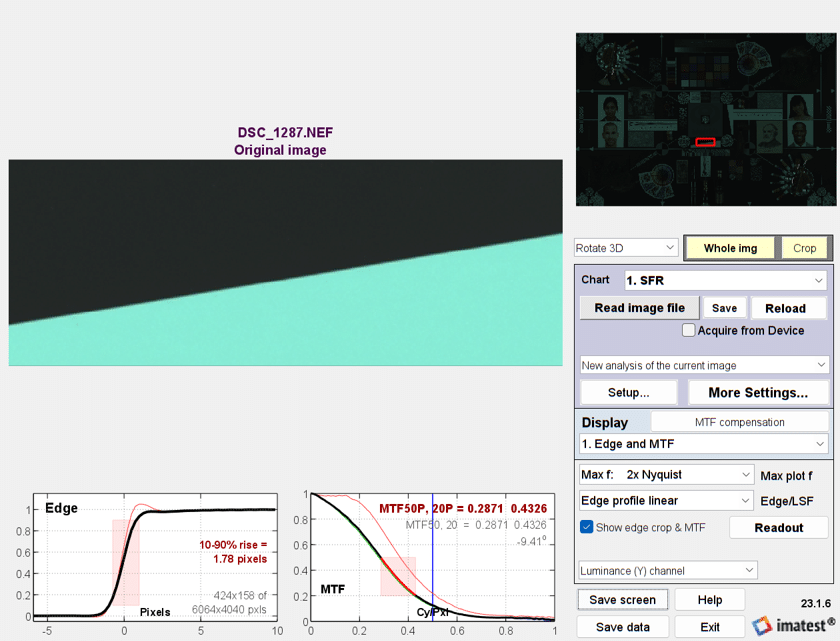
The higher frequencies of the horizontal edge MTF are lower in contrast than those for the vertical edge. This anisotropy is characteristic of a two-dot birefringent AA filter.
Looking at the image with no demosaicing:
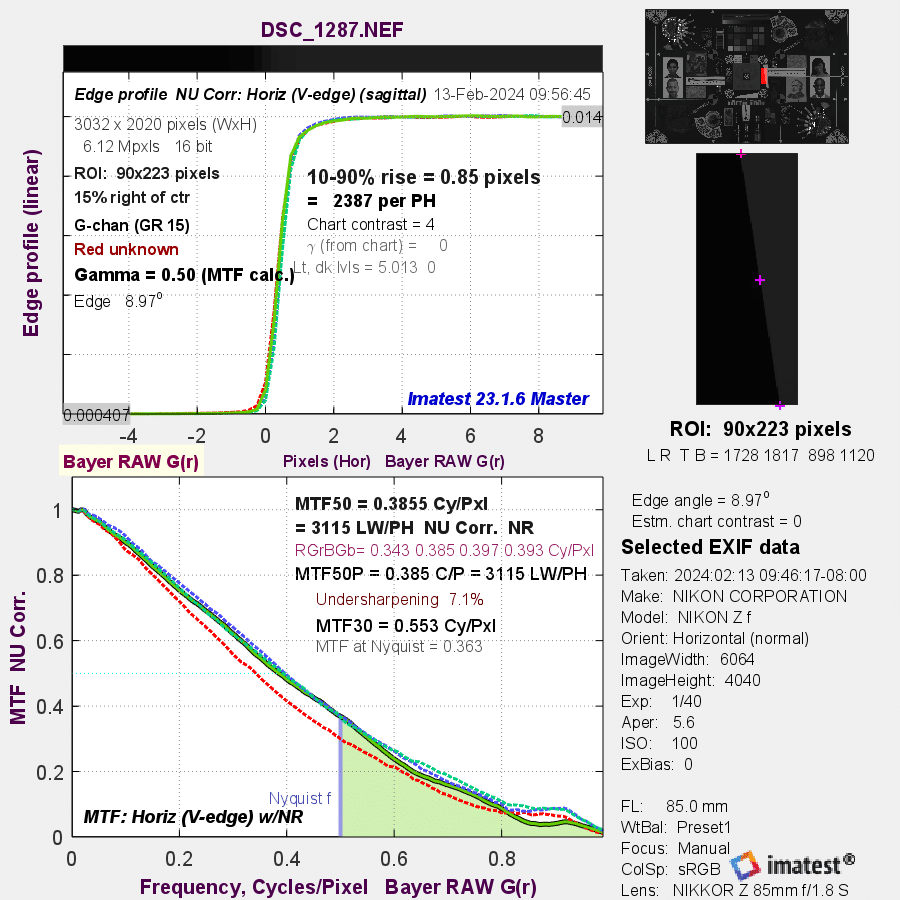
Because there is no demosaicing, be are looking at the Gr channel, which has half the resolution of the demosaiced image. Hence the sampling frequency for this presentation is half tghe swampling frequency for the demosaiced presentation.
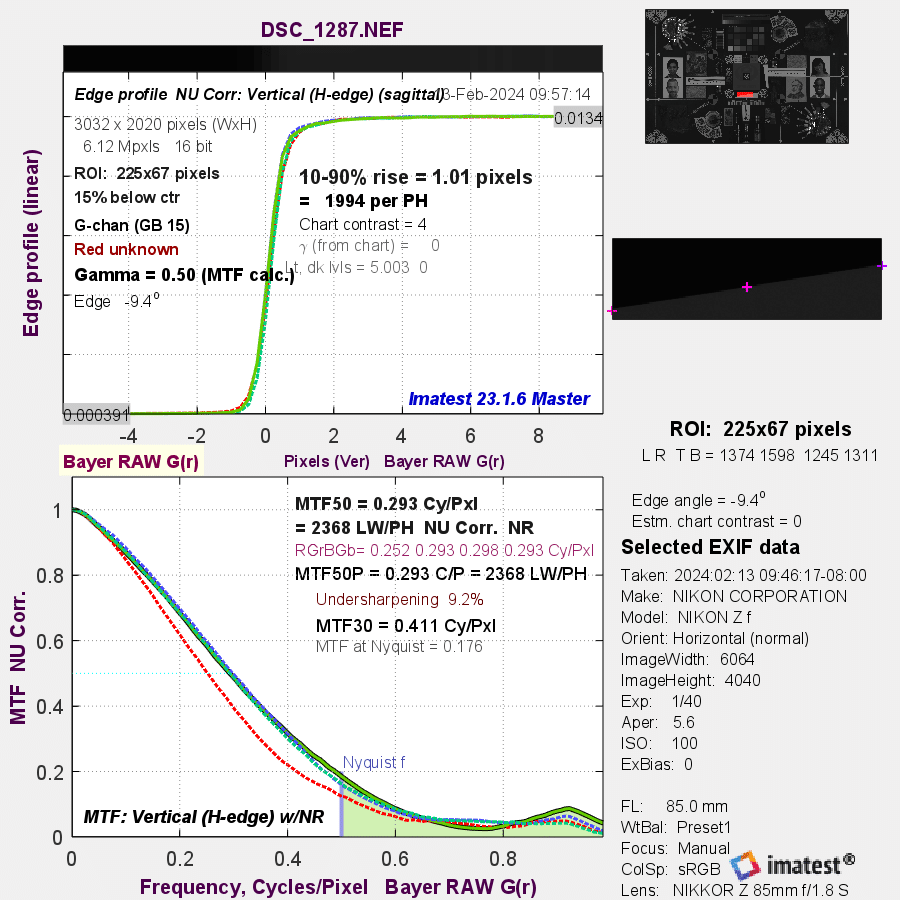
As expected, the horizontal edge shows the effect of the AA filtering, and the vertical edge does not.
For completeness, here is another set of Matlab-demosaiced plots constituting a different presentation.
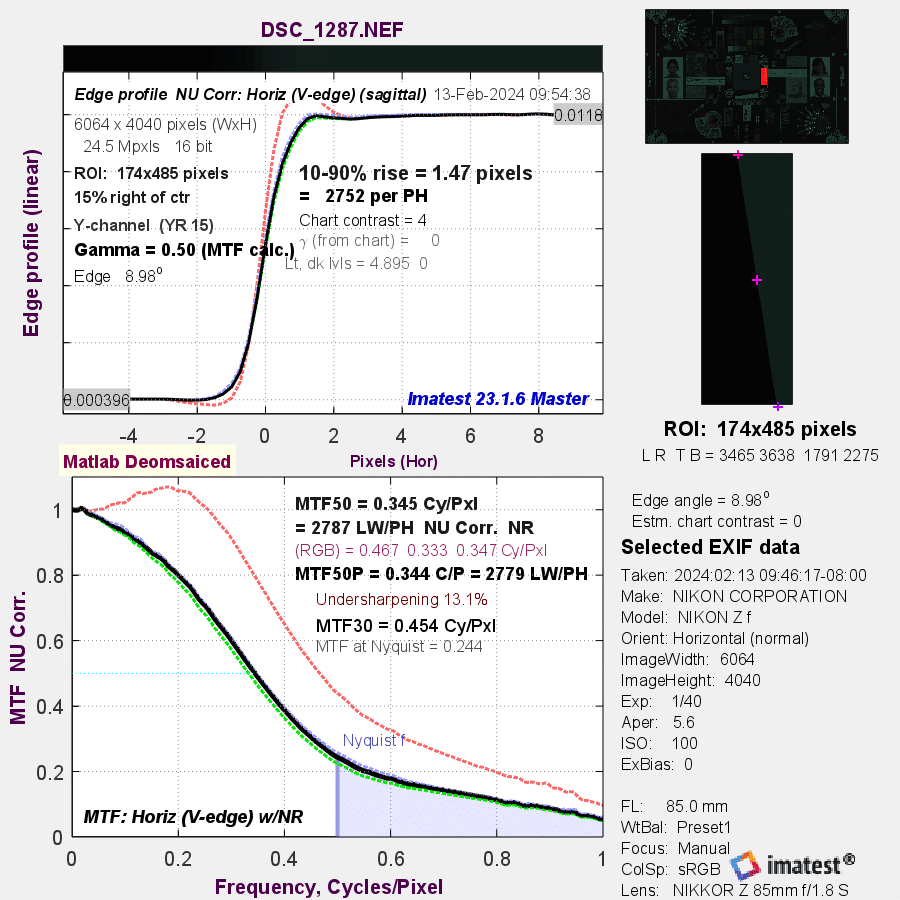
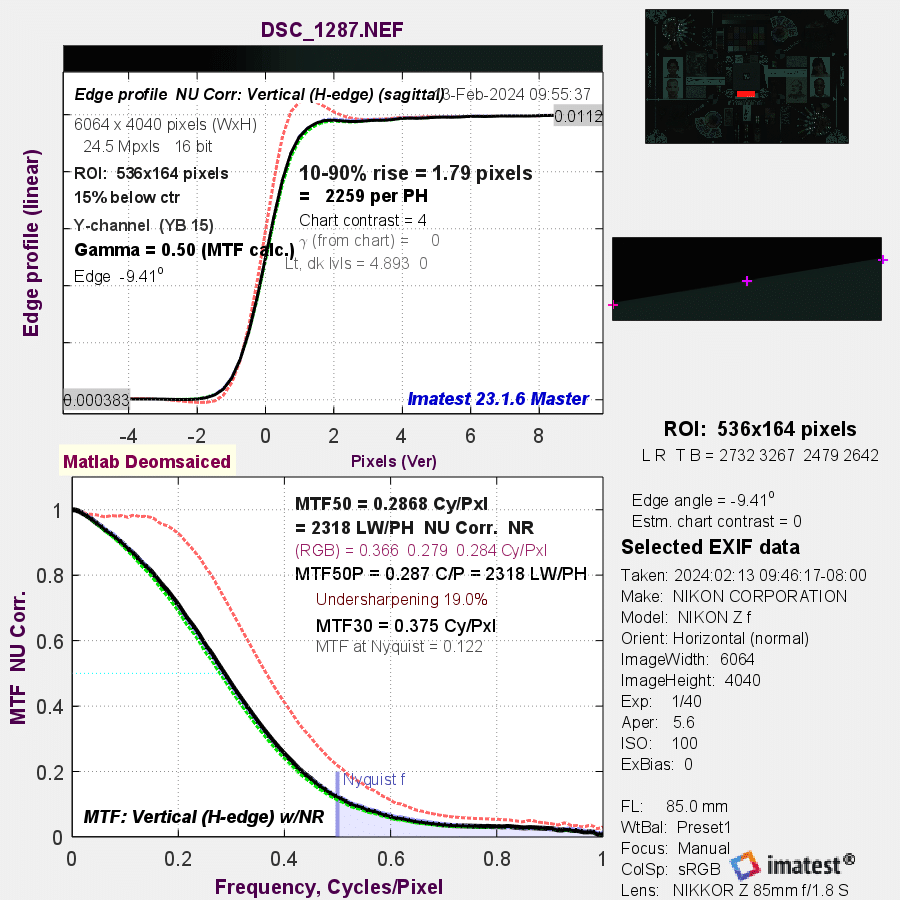
QED.
Leave a Reply